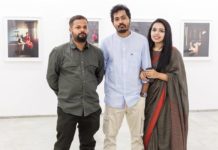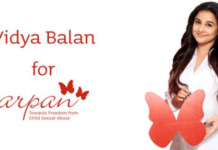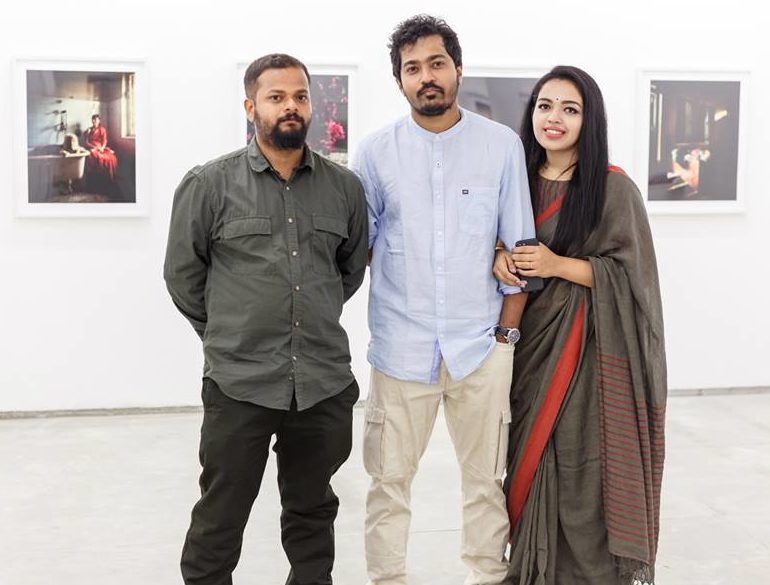28-year old Soumya Sankar Bose quit engineering to pursue a career in photography, telling stories of people in India who’ve been forgotten or shunned by the society.
Twenty-eight year old Soumya Sankar Bose is a contemporary documentary photographer from a small town called Midnapore in West Bengal. His project titled ‘Let’s Sing An Old Song’ tells us the story of the once-popular Jatra artists (Bengali folk theatre) who are now struggling to make ends meet. Whereas his project called ‘Full Moon on a Dark Night’ explores the psychological impact of India’s anti-LGBT (Lesbian, Gay, Bisexual, Transgender) culture.

Source: BBC and NYT featuring Bose’s work
He has been named under the Forbes ’30 under 30′ Special Mentions list. His work been featured in publications such as the New York Times and BBC News. He has received the exclusive and prestigious Magnum Foundation grant back-to-back for two years and the India Foundation for the Arts grant twice. His work has been shown at Houston Centre For Photography, Delhi Photo Festival, Photo Kathmandu, Sepia Eye, and many more. He’s a represented artist at the Experimenter Gallery.
CareerNinja interviewed Soumya Sankar Bose to learn more about his chosen career, his journey to success, and his achievements and challenges.

Source: Forbes
In conversation with Soumya Sankar Bose:
What kind of photography do you do?
I do documentary photography where I tell the stories of people and how they perceive themselves. It is a style that blurs the difference between reality and fiction.
Do you make a good living out of photography?
Yes. Today, I get paid to be featured, to travel and do my work, do exhibitions and talk about my work. I’m able to earn quite well to sustain myself and my family.

Source: The Indian Express featured Bose’s work
Why did you become a photographer?
As a kid, I always wanted to tell story around me. In school, I used to make little magazines expressing what I wanted to say. I think that’s where it all began.
Where do you get ideas from for your work?
Everything I do mostly is related to my life – my memories, experiences, family history, and things that I found mysterious. I try to explore and understand my roots, meet people who faced something similar, and base my work on these themes.

Source: Soumya Sankar Bose; Exhibitions displaying his work
How did you discover photography as your career path? Tell us about your journey.
I’m from a small town called Midnapore in West Bengal. My father used to work for the Indian Railways and my mother was a housewife.
“Being a middle class family, they had decided it would be best for me to study engineering in Kolkata.”
So, like the million other young Indians, I also took up a course in engineering. I wasn’t interested in the course at all, but engineering helped me by bringing me to Kolkata, where I met new people, made friends, and saw that there are more career options available.
I tried a little bit of everything – photography, music, even painting. That’s how I discovered photography to be the best medium for expressing what I wanted to say.
Coming from a middle class family in a small town in West Bengal, how did you convince your parents to let you pursue your passion?
In this case , I consider myself quite lucky. When I was in my final year of engineering, I told my parents that I wished to pursue a career in photography.
It was 2011, and my father, who worked for the railways, was set to retire in 2013. My parents told me that I get two years to pursue photography and they would support me until my father retires. Once he retired, I was on my own.
What did you do once you realized that photography is your calling?
I started reading about photography, its history, photographers from the 60s and their styles, the stories they told through their work, etc.
“For example, I was curious about the role photography played in the First World War, Cold War, Bhopal Gas Tragedy, and how it documented the lives of the people who lived during those times.”
I enrolled myself for the Photography course at Pathshala, the South Asian Media Institute in Dhaka, Bangladesh. Their department of photography is recognized as an institution offering the highest quality education in photography currently available. Shahidul Alam, one of the most famous photojournalists in the world and my idol, was a principal at the Institute.

Why did you drop out of your course at Pathshala?
My parents needed me to be back home as my father had just retired and they couldn’t afford my studies anymore. So, I came back to Kolkata. They never asked me to, but the situation required it.
Did you teach yourself the art of photography?
Since I didn’t finish the course, I had to learn techniques and how to edit and produce photographs on my own. That’s how I found and stuck to my unique style, my own identity.
When you were just starting out as a photographer in Kolkata, how did make ends meet?
Starting out as a young photographer isn’t easy.
“Once I got back to Kolkata from Bangladesh, I took any job that I could find. I knew what kind of photography I wanted to do. But to do that, I needed enough money to get things going.”
So I worked as an assistant photographer at production sets, as a wedding photographer, did some portraits etc. to make ends meet.
How did you receive worldwide recognition for your work?
Once I started producing my first project, I applied for the IFA grant and managed to receive their funding, which is what helped me finish my Jatra project. This work became quite popular and was featured by news publications like the BBC News, The Caravan, Indian Express, among others. Also, I got the Toto-Tasveer photographer of the year award in 2014.
Then I started my next project on the Queer community and received a grant from the Magnum Foundation, only awarded to just 8-9 people and all over the world. That’s when my work started getting recognized worldwide.
Why did you choose Jatra as the theme for your first project?
In 2013, I started working on my first project – Let’s Sing an Old Song. My uncle was a popular Jatra artist, but then had to join a railway factory to earn a living. In the past, a small town like Midnapore didn’t have TVs or cinemas because those were expensive. Our source of entertainment was the Jatra, the Bengali folk theatre.

Source: Soumya Sankar Bose
Through my uncle, I found these once-famous Jatra artists from the 1950s, who are now forgotten and struggle to sustain themselves. Working together, we re-lived those old glorious times from the past.
Why was LGBT your theme for your second project?
I wanted to tell a story from my own time. I wanted to show how young people from my age group struggled with their identities and notions of love.

Source: Soumya Sankar Bose
My aim was to document how these people lived their lives in their heads, which is completely different from their realities. That’s what Full Moon on a Dark Night attempts to portray.
How did you start applying for grants?
I started researching what kind of funding was available in my line of work. My work isn’t journalism as it is a staged story, so I couldn’t apply for journalism grants. It’s also not fashion photography. It might look like fashion, but the story is about the people and their lives, not about their clothes. These people are your everyday people, not models.
I found a few grants that worked in my case and started reaching out to them.
How did you prepare your proposal for the grants?
Back then, I didn’t how to prepare an application or write a proposal. When the Indian Foundation for the Arts got back to me, I went to Bengaluru to meet them and they told me to write a proper proposal.
“My English was quite basic, so I’d asked them whether I could write in Bengali.”
So you wrote your first grant proposal in Bengali?
Yes. Luckily, the IFA said they accepted a proposal in Bengali and then translated it to English. My wife helped me to write it. They unofficially sent my proposal to a legendary photographer publicly well-renowned for her work.
She found my proposal to be the only believable proposal in India and loved it. That’s how I got a grant from the IFA.
How long did it take for you to get a grant?
6-8 months.
How did you win the prestigious grant from Magnum Foundation?
Let’s Sing an Old Song got recognition everywhere. This gave me the opportunity to go to the Angkor Photo Festival in Cambodia, an international photography festival for Asian photographers to show their work.

Source: Angkor Photo Festival
There I met Alexis Lambrou from Magnum Foundation who encouraged me to apply for a Magnum foundation grant.
Doesn’t the Magnum Foundation award grants only to photojournalists?
Yes, they do.
“Even though Magnum Foundation’s grants are mostly for hardcore documentary photographers and very few are awarded worldwide, Alexis assured me not to worry and apply.”

Source: Magnum Foundation Photography and Social Justice Fellowship
I did, and I was awarded the grant, which has completely turned my life around and gotten me worldwide exposure.
And that got you featured by the New York Times?
Yes. Once I got accepted for the Magnum Foundation fellowship, I went to New York where I studied photography and visual storytelling. They helped us make connections within the industry like the National Geographic, The Huffington Post, The New York Times and Time.
I met all these people that I had only read about in real life, and that was a life-changing moment.
Do your parents appreciate what you do?
My mother does, she was always supportive.
My father is someone who has always worked at a government job and the only artists he knew were the few people at his work who would take pictures or write, as a hobby. He was worried because he saw me making money through my projects, but didn’t think it would sustain me in my forties and fifties.
How did you convince your father?
I invited him to my exhibition at Experimenter in Kolkata. He was quite skeptical, but when he came to see me talk in front of a jam-packed audience in English, he changed his mind.

Source: Soumya Sankar Bose; Talking about his work at the Experimenter Gallery
When he went back to Midnapore, he told everyone proudly how his son spoke in English in front a large crowd and so many people had come from different parts of the country and world just to listen to that talk. He now believes that I can have a successful future.
How did you go from speaking little English having studied in a government-run Bengali medium school to giving talks in English to national as well as international audience?
I studied at a government school in Midnapore because that’s all my parents could afford. It was free. The English teacher would teach us English in Bengali.
“When I started studying in Pathshala, I had to learn English because in my profession, you get more recognition globally and not in India.”
Also, Pathshala had a tie-up with different universities all around the world, we would work with international students on some of our coursework.
So I decided to focus on my English. I learned it from Youtube videos. I practiced whenever I could and really focused on it. But I think still I’ve to work on it to make it more refined.
Who is your inspiration?
My grandmother.
What movies and/or books kept you going through the bad times?
Several. When I was younger, a book that inspired me was The Motorcycle Diaries. I drew inspiration from Che’s life as a young man.
I loved Federico Fellini’s movies like 8 and a ½, Amarcord, Roma and found them quite inspiring. Also I love Emir Kusturica’s films a lot.
What are you most proud of?
I’m proud of the fact that I’m independent, I can sustain myself and my family. I’m also proud that I can do my own research and come up with topics. I don’t need to follow someone else’s instructions or orders.
According to you, what is crucial to becoming a photographer in India today?
First of all, you have to discover what style of photography you want to do – still life, portraits, weddings, fashion, etc. Start by taking up small projects for each style.
Then do your research and learn everything about that particular style – the concepts, the history, the famous photographers. Decide whether this is something you really want to do and you have what it takes.
“Many times, I see engineers in Kolkata and Mumbai wanting to be photographers just because they’re bored with engineering.That shouldn’t be the only reason. You have to really want it.”
Now start making a plan – what is your style? Platform? How do you wish to present your work? How are you going to get recognized?
Do this before you quit whatever you’re doing right now. If you want to survive on photography as a full-time profession, stay focused on your projects. If you’re focused, no one can stop you.
What advice would you give to our readers who aspire to become successful photographers themselves?
Believe in yourself, keep working for what you truly want, and be patient.
Found this article interesting? Click here to find out how a social entrepreneur Nupura Kirloskar develops technology to ease the lives of the deaf community!































